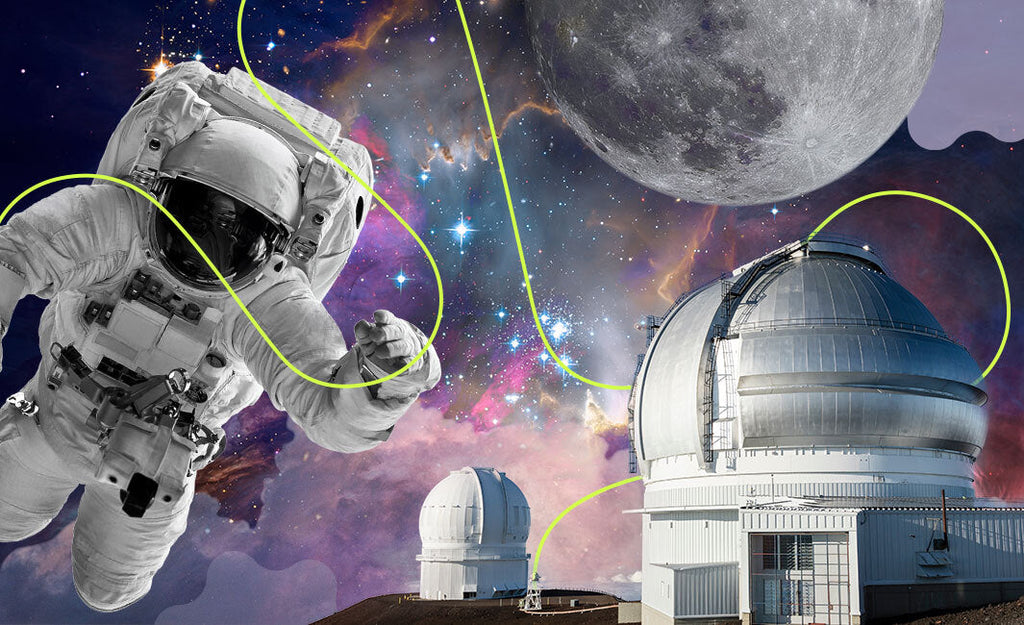The Role of Women in the New Space Race: Breaking Barriers in Space
The exploration of space has always symbolized humanity's drive to push the boundaries of what is possible. Yet, for much of history, this field was dominated by men. Despite systemic barriers, women have played critical roles in space exploration since its inception. In the era of the "New Space Race," their contributions are becoming increasingly prominent and vital. This article delves into the role of women in this new chapter of space exploration, highlighting their achievements, the challenges they continue to overcome, and their impact on humanity’s journey beyond Earth.
The Evolution of the New Space Race
Unlike the Cold War-era space race, the modern New Space Race is driven by a combination of national ambitions, private industry innovations, and global collaboration. Countries such as the United States, China, and India are competing to achieve milestones like returning humans to the Moon, establishing bases on Mars, and developing space tourism. Meanwhile, private companies such as SpaceX, Blue Origin, and Rocket Lab are redefining the industry with groundbreaking commercial and technological advancements.
In this rapidly evolving landscape, the need for diverse perspectives and expertise has never been greater. Women are stepping into leadership roles, shaping the vision and execution of space missions, and inspiring the next generation of explorers.
Historical Contributions of Women in Space Exploration
The Hidden Figures
The story of women in space exploration began long before humans walked on the Moon. During NASA's early days, brilliant mathematicians and engineers like Katherine Johnson, Dorothy Vaughan, and Mary Jackson played crucial roles in calculating trajectories for the Mercury and Apollo missions. Despite their groundbreaking contributions, these "hidden figures" often worked behind the scenes, battling both sexism and racism while making history.
Trailblazing Astronauts
In 1963, Valentina Tereshkova of the Soviet Union became the first woman to travel to space, a remarkable feat that demonstrated women’s potential in space exploration. Two decades later, Sally Ride shattered barriers as the first American woman in space.
Since then, pioneers like Mae Jemison, the first African American woman in space, and Peggy Whitson, who holds the record for the most cumulative days in space by an American, have paved the way for future generations.
Women’s Expanding Role in the New Space Race
Astronauts Leading the Charge
NASA’s Artemis program, which aims to return humans to the Moon by 2025, has prioritized landing the first woman and the next man on the lunar surface. Christina Koch and Jessica Meir, who made history with the first all-female spacewalk in 2019, are among the top candidates for this mission.
China’s space program has also recognized the importance of women. In 2022, astronaut Wang Yaping became the first Chinese woman to lead a spacewalk during a mission aboard the Tiangong space station.
Women in Leadership
Women are increasingly assuming leadership roles in space organizations and companies. Gwynne Shotwell, President and COO of SpaceX, has been instrumental in the company’s success, overseeing major achievements like Falcon Heavy launches and Crew Dragon missions. Similarly, Lori Garver, former Deputy Administrator of NASA, played a pivotal role in fostering public-private partnerships that have revolutionized the space industry.
Challenges Women Face in Space Exploration
Despite significant progress, women in the space sector still face numerous challenges:
Gender Bias and Underrepresentation: Women remain underrepresented in STEM fields, which form the foundation for careers in space exploration. Persistent stereotypes and biases deter many young girls from pursuing degrees in science and engineering, creating a pipeline issue that affects the industry.
Workplace Inequality: Women in aerospace often encounter pay gaps, fewer opportunities for advancement, and a lack of mentorship compared to their male counterparts. The "glass ceiling" remains a persistent barrier in many organizations.
Health and Safety Concerns: Space missions present unique challenges for women, particularly regarding the effects of microgravity, radiation exposure, and long-term spaceflights on the female body. Much of the existing research has focused on male astronauts, leaving gaps in understanding how space travel impacts women.
Women’s Transformative Impact on the New Space Race
Advancing Space Technology
Women are at the forefront of developing cutting-edge technologies for space exploration. Dr. Swati Mohan, an Indian-American engineer, led the guidance and control operations for NASA’s Perseverance rover, which successfully landed on Mars in 2021. Her leadership highlights how women are shaping the future of interplanetary exploration.
Shaping Space Policy
As space becomes a more contested and commercialized domain, women are influencing policy decisions at the highest levels. Figures like Pamela Melroy, a former astronaut and current NASA Deputy Administrator, are crafting policies to ensure space remains a peaceful and sustainable frontier.
Inspiring Future Generations
Representation matters. Seeing women succeed in the space industry inspires young girls to pursue STEM careers. Initiatives like the United Nations’ Space4Women program and nonprofits like Girls Who Code are working to close the gender gap and empower women to contribute to the New Space Race.
The Importance of Diversity in Space Exploration
Inclusion in space exploration isn’t just about equity; it’s essential for innovation and problem-solving. Diverse teams bring unique perspectives and approaches to challenges, enhancing creativity and efficiency. Studies have shown that mixed-gender teams perform better in high-stress, confined environments like those experienced during space missions. As humanity prepares for long-term missions to the Moon, Mars, and beyond, diversity will be critical to success.
The Future of Women in Space
The future of women in the New Space Race is bright but requires ongoing efforts to address systemic barriers and promote inclusivity. Key steps include:
Investing in STEM Education: Encouraging young girls to pursue STEM fields from an early age is crucial. Scholarships, mentorship programs, and outreach initiatives can help bridge the gender gap in space-related careers.
Improving Workplace Policies: Organizations must prioritize diversity, equity, and inclusion by implementing policies that support work-life balance, equal pay, and career advancement for women.
Expanding Research on Women in Space: More research is needed to understand how space travel affects women’s health and to develop technologies that address their unique needs.
Fostering Global Collaboration: Women from diverse cultural and geographic backgrounds should have opportunities to participate in space exploration. International partnerships can ensure inclusivity in the New Space Race.
Conclusion
Women are breaking barriers and transforming the New Space Race, proving that the sky is not the limit when it comes to their potential. From astronauts and engineers to policymakers and executives, they are shaping the future of humanity’s journey into the universe.
As the world embraces the opportunities of this new era of space exploration, it must also prioritize creating an inclusive and equitable environment where everyone, regardless of gender, can contribute to the pursuit of knowledge and discovery. By empowering women and celebrating their achievements, we can ensure that the next chapter of space exploration reflects the diversity and brilliance of all humanity.




